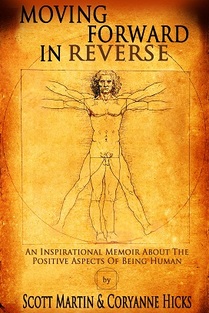 Author Scott Martin should have died in a hospital bed at age 35. Instead, he managed to fight off almost certain death and to survive “the flesh-eating disease".
After four amputations and intensive rehabilitation, he thought all he wanted was to get back to the life he’d had. In this seemingly insurmountable quest to regain what he’d lost, Martin would build a life infinitely more fulfilling than the one that was savagely taken from him. Scott Martin and Coryanne Hicks invite you to register to receive weekly chapter updates on Scott's book, Moving Forward in Reverse via email at www.moving-forward-in-reverse.com
Pam to Scott: How was life different when you emerged from the coma? Scott to Pam: After one month in a coma, I awoke to total and absolute confusion. Because of atrophy, I had lost 40 pounds of muscle and was too weak to move. I was intubated with a large blue tube shoved down my throat so I couldn't speak. So much had happened while I was asleep and I was oblivious to it all. Pam to Scott: What was your greatest physical shock at that time? Scott to Pam: Because I couldn't move, I was not aware that my hands and portions of my feet had been amputated in order to stave off the progression of the necrotizing fasciitis that had started from the tips of my fingers and toes and was destroying my muscle and skin. Dr. Henrickson, head of the Intensive Care Unit, told about what had happened -- that I had contracted "the flesh-eating disease" -- shortly after I awoke. Pam to Scott: What was most difficult to deal with emotionally as time went on? Scott to Pam: The more that I learned about my time in the coma, the more I learned about what my family had experienced. The ordeal started on a Friday as I was playing a coaches soccer game while attending a youth camp near Chicago as a guest speaker for Nike. I removed myself after feeling more fatigued than I had ever felt before. After suffering through the night with alternating fever and chills and profuse vomiting, I drove myself to my mother's home 90 minutes away in Janesville, Wisconsin where she asked my step-father to take me to the hospital emergency room. After receiving fluids and being told to relax, I returned the next morning with the same symptoms. From there I fell into a coma. My mother was called the next day and told that she should contact her pastor to grant her son his last rites. That started a chain-reaction of family members taking turns in the ICU awaiting for what was expected to be my death. At one point, my mother was given the choice of "pulling the plug" or moving forward with amputations which in hopes of slowing the illness enough for antibiotics to fight the bacteria. My family remained uncertain of my fate until I awoke. Pam to Scott: How do you deal with the challenges your medical condition faced you with? Scott to Pam: I have been able to overcome many of my shortcomings by mastering the use of two myoelectric hands and prosthetics to walk, but I did suffer through years of depression as my positive attitude finally gave way to what I describe as The Fog. I do still feel deep guilt knowing what my family went through for me. I used that guilt as motivation to rebuild myself.
Pam to Scott: What ultimately led you to take responsibility for your recovery?
Scott to Pam: At the time of the illness, I was the head coach of the women's soccer program at the University of Wisconsin at Eau Claire. My goal was to continue my way up the ladder to reach the same position at a major university and win the National Championsip. The illness occurred as I was heading into my second season at UWEC. As my rehabilitation progressed and I grew stronger, I was allowed to transfer to the hospital in Eau Claire. Each day, the players would take me to the soccer fields and help me into a wheelchair from where I would direct the goalkeepers. The next season, we reached a national top 10 ranking and I was nominated for the national coach of the year award. But I found myself unable to keep pace and slowly fell into a depression. As I fell, so did our program. Though we kept winning, my life sank lower and lower. The tipping point was a medical malpractice trial against the emergency room doctor that we believed failed to properly diagnose my true condition. Following two weeks of testimony, we lost the case and I decided to begin a plan of breaking myself down in order to build myself back up. Pam to Scott: What was your recovery plan?Scott to Pam: I took a job as an assistant coach at a small college in Washington State without pay and began accepting welfare, including food stamps. The head coach was well connected within the west coast soccer community, so my deal with him was that he would help me secure a position at a larger university. The head coach did contact me before the next season and helped me secure a position as assistant soccer coach at Gonzaga University, a prominent university as I had bargained. In the meantime, I began seeking help for my depression. My psychologist sent me to a physician to prescribe medication. This was Dr. Ellen Parker. I was impressed with the questions she asked and my appointment was enjoyable. Then, two nights later, Dr. Parker called me to check on me and how I was doing. I felt this was strange and became aware of an ulterior motive. Then she asked "Would you like to meet for a coffee?" I retorted "Sure, but I don't drink coffee". To cut to the chase, we were married five months later. Pam to Scott: Please describe your interest in adoption Scott to Pam: Ellen and I saw a need and decided to step forward to help. We now have two children (sister and brother) from Romania and three (boy and two girls) from Ethiopia. We encourage couples to consider adoption as we have never viewed the kids as anything but our children Pam to Scott: How did your plans change?
Scott to Pam: Marrying Ellen and adopting the kids were so totally unexpected and were never a thought when I first left Wisconsin for Washington. The head coach at my interim position contacted me before the next season to help me secure a position as assistant soccer coach at Gonzaga University, so I had set an interview to receive the position as head coach. Instead, I decided to decline and stay home to become a full-time father. You may visit Scott Martin's website at: http://www.moving-forward-in-reverse.com/#!home/mainPage
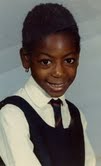 Ola Rhodes speaks of her life and work: I have lived in so many different parts of the world and led such an unusual life, I love to introduce a common strand of humanity in my writing, and use my experiences to mould the ‘other’ into the familiar. The title of my book is The Tribe of One and it will be ready for publication at the end of this year (2012). My main intention with my writing is to inform and inspire my readers. My readers often empathise with the very human characters in my work and are drawn into the stories through my unusual and often comical observations of life, regardless of my characters’ culture and background. Pam to Ola: Have you balanced personal memories and research in writing your book, or is it based primarily on your own experiences?Ola to Pam: The Tribe of One is mostly composed of my own memories and life experience during my childhood. I am lucky enough to have a vivid long-term memory dating as far back as being two and a half and Iooking forward to my third birthday. I consider this a great asset with my writing. I do a fair bit of research on the Internet regarding icons and trends of the seventies and eighties, often just to jog my memory and add texture to my writing. I also speak to some of my friends’ parents with Nigerian background, as I need to understand more about the culture in Nigeria during my Mother’s childhood. So I guess I use a combination of everything, but mostly I rely on my memory and how I felt at the time. Pam to Ola: What in your opinion is the most common misconception Westerners have of Nigerian culture? Ola to Pam: I think one of the easiest misunderstandings is the tendency to ascribe otherness to Nigerians as a people. When I first arrived in Nigeria from England at the age of twelve, I barely spoke a word of Yoruba (my parents’ tribal language). Walking down the street and eavesdropping on strangers’ conversation was pointless; all I heard was gibberish. As I learned the language, I grew to understand that people in Lagos were having exactly the same kind of conversations as people in London or people in New York: I heard young adults in deep conversations about the latest fashion or pop star. Adult men and women were discussing politics and how the youth of today don’t show respect anymore, how things were so much better when they were young etc. Pam to Ola: How is the Nigerian idea of a witch different than our Western concept?Ola to Pam: Witches exist as frightening yet distant characters safely held within the concept of fairytales for Western children. Also witches are not always evil: from The Witches of Eastwick to Harry Potter, there are many instances where witches are no more than human beings with special powers that they often use benevolently to fight evil. In Nigerian culture a witch is perceived as a tangible person, possibly a stranger on the street, or a neighbour, or even a relative. Superstition and fear are deeply interwoven within the fabric of the culture, especially within semi or uneducated communities. Some of the worst insults are based on calling someone a witch: - Iya Aje (Mother of witches), being the most popular. There are different types of witches, for example the Abiku (born dead) is a child or baby witch who is seen as being sent down by the gods and then taken back. This manifests as a miscarriage a stillbirth or a child that dies in infancy. When a woman has several miscarriages, there is a thought that it is the same child being born and dying over and over again to play a trick on its parents. If a child eventually survives and ‘decides’ to live, he or she is seen to have special powers. Like the power to put a curse on whomsoever they wish. Pam to Ola: Does the legal process in Nigeria generally support the persecution of witchcraft, or punish it?Ola To Pam: The official legal system in Nigeria is rooted in Western, specifically the English Judiciary system; even the judges wear the same wigs. . My father, who is barely mentioned in The Tribe of One, studied at Oxford and became a Judge in Nigeria. The official judiciary system treats people who persecute others by branding them as witches very harshly, especially in recent years. Pam to Ola: In your experience, how does the use of fear to control children originate and play out in Nigeria? Ola to Pam: One of the main themes in The Tribe of One is the brutality towards children within Nigerian culture. People in the West only get to see the extreme cases of child cruelty, such as children that have been accused of being witches and tortured and ostracized from their communities. But this is the extreme end and that level of brutality comes from somewhere, its not as if everyone is lovely to kids and suddenly there this tiny pocket of child abuse that has mushroomed up from nowhere. I feel that within many Nigerian homes there is an incredible amount physical brutality. Parents pick branches from trees and beat their children for not doing their chores to a certain standard, or falling behind with their homework. Rather than encouraging confidence and self-discipline there seems to be a culture that these qualities need to be beaten into a child. Teachers in schools often walk into class clutching a stick and wearing a smile. I attended an all girl school in Nigeria between the ages of twelve and seventeen. A majority of the teachers were male and at least 60% of all the teachers seemed to take great pleasure in whacking young girls on the back and behind with the same type of sticks that are used on cattle. At other times a teacher would strap about ten rulers together and use the edges as weapon on the outstretched knuckles of students, literally coming within an inch of breaking the victims' fingers. I remember on one occasion my fingers got so swollen from this particular punishment that I was unable to bend them enough to hold a pen and therefore could not sit an exam. We would often be forced to kneel down in the sun with our eyes closed and our arms stretched out above our heads for hours on end in the baking African heat. Or told to stand in a half squat clutching on to the lobes of our ears for some bizarre reason. Often these punishments were meted out for the most trivial of misdemeanours; I recall an incident in The Tribe of One, during a Home Economics class when the teacher gave one of my fellow classmates twelve of the best for using a metal rather than a wooden spoon to fold a pastry. My most sincere belief is that this kind of treatment towards children has been going on for too long and after much research, I believe that the psychological affects of this abuse has a profound effect on the way Nigerians treat each other as adults. I feel as if a vast percentage of the population are experiencing posttraumatic stress syndrome. Pam to Ola: In your experience, what are some of the more positive aspects of Nigerian culture?Ola to Pam: There are many wonderful things within Nigerian culture. One of the main things I remember from my time there was the amount of unofficial charity. Nigerians really know how to celebrate and at every wedding I attended, the amount of food happily given to beggars on the street almost matched the amount that was consumed at the reception itself, and may I add this was fresh food, not leftovers. Another wonderful thing is the Nigerian sense of humour, which in many ways runs parallel to the English sense of humour. Nigerians are the first ones to laugh at themselves and the eccentricities within their own culture. However beware if you cross the line and insult their hospitality, which is generous to a fault. Another wonderful thing about Nigerian culture is the food. Nigerians have a way of mixing spices and herbs and adding flavour to a food that, for me, is incomparable; but maybe I’m biased. Lastly I have to mention how profoundly creative and intelligent Nigerians are as a race; wonderful entrepreneurs, artists, musicians and doctors are often overshadowed by their counterparts with the same skills who have decided to invest their intelligence in the dark arts of people trafficking, fraud and corruption. Pam to Ola: What factor do you believe is most important to the healing of abused children?Ola to Pam: I feel the factor most important for healing an abused child is the need to be heard. The need to have someone acknowledge the pain, hurt feelings and humiliation that sits deep within children and adults who have been put through abuse during their formative years. There needs to be an open dialogue within Nigerian, and I believe African culture in general, as to why it is seems so necessary to use such intense violence towards the young and what the resulting effect of that kind of abuse is during adulthood. Here is a link to Ola's blog: http://olarhodes.wordpress.com/ where you can follow her work.
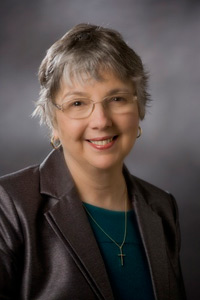 Kathleen Pooler is a writer and a retired Family Nurse Practitioner who is working on a memoir about how the power of hope through her faith in God has helped her to transform, heal and transcend life’s obstacles and disappointments: divorce, single parenting, loving and letting go of an alcoholic son, cancer and heart failure to live a life of joy and contentment. She believes that hope matters and that we are all strengthened and enlightened when we share our stories.
Pam to Kathleen: What unique contribution to faith do you see women making today? Kathleen to Pam: In my experience, women are the nurturers in the family and are often the ones to plant the seeds of faith. My Great-Grandma Rose did that for me. Widowed at the age of thirty-three with seven children to support, she lived in poverty. Somehow, she made do with her strong belief that God would provide. As a Roman Catholic, I have a devotion to The Blessed Mother that was instilled in me by Grandma Rose. She was always praying the Rosary and asking me, “Katarina (my name in Italian) you wanna be a nun or you wanna get-a married”. It made me nervous as I figured she had some pull but my Mom reassured me that if God wanted me to be a nun, I would feel the call. I was relieved as I knew I could serve God in other ways. But the vision of that tiny woman with her unwavering faith came to me in whispers and glimpses throughout my entire life as I faced my own challenges. She is still with me when I pray the daily Rosary. Faith is a gift given to me and nurtured in my childhood by Grandma Rose.
Pam to Kathleen: How has your faith influenced you in your career? Kathleen to Pam: I felt called by God to go into nursing when I was thirteen years old. I was sitting in my eighth grade classroom study hall, reading a book, Anne Snow, Mountain Nurse. My heart started pounding and I had a feeling of excitement as I read about Anne Snow riding on horseback in the hills of Virginia to care for poor families as a Community Health Nurse. From that moment, I knew what I wanted to do. Of course, I didn’t realize it was a calling until many years later. At the time, I just knew it felt right. My faith in God has guided me throughout my entire career as a nurse and nurse practitioner. Every morning on my way to work, I prayed that I would remain open to being God’s servant in caring for the ill or in carrying out my role as an educator, administrator. I often prayed with or over patients with their permission. I said many silent prayers for those who were not comfortable. I also prayed for the strength to deal with whatever I had to face- a dying patient, a difficult family/coworker/physician. Jesus is the Divine healer and if Jesus is in me then I am carrying out His work. Pam to Kathleen: How do you see miracles working today? Kathleen to Pam: A miracle is something beyond human explanation. On December 19, 1996, worsening shortness of breath and a dry cough had precipitated an early morning trip to the emergency room. I was pacing near my stretcher, waiting for the results of a CT scan of my chest, realizing something serious was happening. As I paced, I cried out in desperation, “Dear God, please give me the strength to do whatever it is I need to do for this is the battle of my life and for my life”. A peace beyond understanding flowed over me and stayed with me throughout my eventual diagnosis of Stage 4 Non-Hodgkin’s Lymphoma and my two year treatment course which included chemotherapy, radiation and a peripheral stem cell transplant. I allowed myself to be open to accepting help from others- meals, gifts, prayers. God had answered my plea to “do whatever I need to do” to fight the battle. Allowing myself to be vulnerable enabled me to accept God’s love, grace and healing. He sent me many angels in the form of family, friends and caregivers on my healing journey. Simultaneous to the cancer journey was my young adult son’s spiral downward into alcoholism. The cancer was easier to deal with than watching my son’s descent. At least I had options for treatment for the cancer and felt some sense of control. I had no control over my son’s choices and behavior. So I prayed and learned to lean on God. I learned to hand my son over to God and to let go of my need to control. And I never, ever gave up hope that God would heal me and my son. Grandma Rose echoed in my ear “God will provide” and He did. That is the miracle of faith in my life. Pam to Kathleen: What kinds of events or incidents have helped you understand God best? Kathleen to Pam: Having walked through these challenges has deepened my faith. Having been through a life threatening illness and the terrors of loving and letting go of an alcoholic son forced me to dig deeper to find the treasures of my faith within. But now that I am on the other side of these challenges, I see God every day in the people I love, nature, all the little things in life that matter. All my challenges have given me the gift of perspective about what really counts in life. “Be still and know that I am God” Psalm 46:10 Pam to Kathleen: Hope is one of your favorite themes. How have you held on to hope in your own life?Kathleen to Pam: My favorite quote is “Some things have to be believed to be seen” by Ralph Hodgson and two of my favorite scripture verses: “Three things last forever-faith, hope and love-and the greatest of these is love. Corinthians 13:13 and “For I know the plans I have for you,” says the Lord. “They are plans for good and not for disaster, to give you a future and a hope.” Jeremiah 29:11. They have guided me through my dark moments when I faced my own mortality and when I was filled with despair over my son’s life. Pam to Kathleen: You talk about the importance of sharing our stories. What is your process when you write? Kathleen to Pam: I write daily usually during the day and when I’m not writing, I’m thinking about writing. If I don’t get my quota of writing in during the day because life interferes, I end up not being able to sleep at night as the words keep swirling around in my head. So, I’ve learned to discipline myself to write during the day. Sometimes I write in a journal- or on a napkin or piece of scrap paper if I am away from the computer. Most of my writing is on my PC or iPad. I use Evernote if my iPad is available to capture passing thoughts/story ideas before they leave me. Pam to Kathleen: Can you share with us some ideas of how to sort out which memories to use in our writing? Kathleen to Pam: I have to be clear on the theme of my memoir first to decide which memories tie in with my theme. But initially, I just keep writing down scenes as they pop into my mind. Often times, once I start writing, scenes and characters show up unannounced. It’s like the story writes itself or unfolds on its own. The key is “butt in the chair” and write raw without editing, even if it doesn’t make sense. I did a blog post on Seven Research Tools I Am Using & Why They Are Important in Memoir Writing which lists ways to sort out memories: http://krpooler.com/2012/08/06/why-research-is-important-in-memoir-
writing/Kathleen Pooler blogs weekly at her Memoir Writer’s Journey blog: http://krpooler.com and can be found on Twitter @kathypooler and on LinkedIn,Google+, Goodreads and Facebook: Kathleen Pooler
One of her stories “ The Stone on the Shore” is published in the anthology: “The Woman I’ve Become: 37 Women Share Their Journeys From Toxic Relationships to Self-Empowerment” by Pat LaPointe.
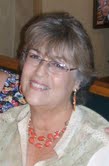 Mystery writer Sunny Frazier uses many of her own memories and experiences to bring her protagonist and alter ego, Christy Bristol, to life. Her fictional crime series is about a detective who makes use of astrology to crack cases. Talk about creative--! But Sunny has an interesting life, and here she shares how her own experiences contribute to her writing. Her most recent title is Where Angels Fear. Pam to Sunny: Sunny, can you describe the catalyst that led you down the primrose path to a life of crime writing?
Sunny to Pam: At about the age of 7, when I discovered the library and all the books, I knew I wanted to write one myself. It just seemed like a no-brainer. I loved weaving stories and I guess I thought all children thought the way I did. It wasn't until much later that I found out so many of my peers detested writing. Pam to Sunny: It happened in the library! I should have known. Seriously, your protagonist is a detective who uses astrology. In your experience, where do most people go astray when they think of astrology?
Sunny to Pam: People confuse astrologers with psychics. Yes, there can be some overlapping, but I don't look at a person and come up with predictions out of the blue. I don't even like it when people try to make me guess their sign. I try to explain that each person has a universe inside them and many influences on their personalities. Astrology is a tool to help people get a handle on life. Sometimes the stars just aren't in your favor. I do try to offer ways to deal with trying times or make the most of good planetary line-ups. I hate it when people act like it's some sort of game. To tell you the truth, a really bad horoscope can land me in bed sick. I'm often stunned by the accuracy of my predictions . Some people think it's pagan and against God. I, personally, feel my “gift” comes from a higher power. I'm not comfortable taking money for doing a chart, but I try to only cast horoscopes for people who are in a crisis. There is so much to say about learning astrology and so many levels. I'm pretty basic, but further along than the average person. I went into a metaphysical bookstore in Los Angeles and saw 12 volumes of Arabic astrology. That's when you know you don't know anything! Having said that, you have to wonder why the study of astrology has lasted through centuries. Today we don't use it to predict when kings will die and people don't have their own astrologers on the payroll, but there is still something very compelling about the practice. I'm respectful and don't overplay my charting or my skills.
Pam to Sunny: What can you tell us about the work of a real-life detective? Sunny to Pam: Most of the work is boring. Much of it is tracking leads that go nowhere. And sometimes catching criminals is just a matter of luck. The paperwork involved is crushing and dealing with the people above you is frustrating. Workplace politics sometimes take precedence over actual work. But, cop humor is funny, weird stuff happens that the public never hears about and loyalty is key.
Pam to Sunny: How has your miliatry experience contributed to your writing career? Sunny to Pam: My time in the Navy has affected much of my life. Law enforcement for me was simply an extension of military service. I understood rank and chain of command. I took responsibility and showed leadership. All of that goes in my books when I show my character, Christy Bristol, as a civilian dealing with the sworn officers. She may not always like the system, but she knows better than to buck it outright. Instead, she goes around the obstacles the people she works with put in front of her in order to get the cases solved. Pam to Sunny: Your alter ego Christy no doubt shares many of your personal memories. How do you bring her to life in your stories? Sunny to Pam: I believe keeping some of my personal history in my stories makes the stories sound authentic. However, I don't indulge my ego by making it all about me or only showing my good qualities. I give my protagonist lots of flaws, weaknesses and she's often wrong about her opinions. I keep my politics out of it and, although there is a nun in the novels, it's only a counterpoint to the astrology. I'm not preaching astrology or trying to convert anyone. In fact, the horoscope often trips Christy up and messes with her head.
Pam to Sunny: What can you tell us about your working experience with serial killers? What do you think is the reason we like to write and read about them? Sunny to Pam: We've only had one serial killer in Fresno and I was “fortunate” enough to be working at the Sheriff's Dept. when his killings occurred. I wrote about the case years later in a short story. Very chilling. I think what fascinates the writer is not the crime itself and the details, but the inner workings of the psychology of these killers. Many of us mystery writers have moved away from “Whodunits” to “Whydunits.” My serial killer in my second book, “Where Angels Fear” acts in revenge mode against something that happened to her mother back in Vietnam during the war. The one I'm currently working on, “A Snitch In Time,” is more of a vigilante killer, and there are many suspects as the victims are considered “Undesirables” in this small town. Sunny Frazier welcomes you to her website.
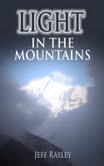 Jeff Rasley: Mountains of Meaning
I am pleased to interview a fellow Friend, Jeffery Rasley, about his experiences in the mountains of Nepal . Jeff Rasley is author of 6 books; his most recent book about Basa village is Light in the Mountains -- A Hoosier Quaker Finds Communal Enlightenment in Nepal. It is available on Amazon by clicking here.
Pam to Jeff: Jeff, can you describe what the conquest of mountains has meant to you personally?
Jeff to Pam: I would never say that I or anyone else "conquered" a mountain. Some climbers use that term, but I find it disrespectful of the mountain. I pray for the cooperation of the mountain and nature to allow me a wonderful experience on the mountain. I first went to the Himalayan Mountains in Nepal as an adventurer and mountain climber in 1995. After four Himalayan expeditions in five years I was forced to question what I was really doing in Nepal. In 1999 my climbing team barely escaped an avalanche which killed three Nepalese porters.Those men died carrying equipment for Western climbers. Was there any sense to make of the loss of three lives? Even though there was nothing I could have done to help those men, I wasplagued by guilt over their deaths. I resolved I would not go back to Nepal.There were other places to go adventuring, which would only put me in danger, not others. It was no longer safe to visit Nepal, anyway. A violent Maoist revolution against the King had broken out. The Army was shooting demonstrators in the streets of Katmandu, and Maoists were blowing up buildings and bombing buses.SARS had broken out in Asia.In June 2001 Crown Prince Dipendra shot and killed his parents and siblings as they sat down to dinner, and then shot himself. Political instability followed. Nepal was put on the State Department’s travel warning list. The allure of Nepal as a magical kingdom for Western adventurers was lost. But I did return in May 2003 to join in the Jubilee celebration of the 50th anniversary of the first recorded summit of Mt. Everest by Sir Edmund Hillary and Tenzing Norgay. My purpose was to research and write about the changes to Sherpa culture in the 50 years since Hillary and Norgay’s summit of Mt. Everest in 1953. My friend and translator, Hari Pudasaini, and I trekked through the Khumbu region of Nepal along the Everest Base Camp trail up to Base Camp at 18,000 feet. We met twenty members of the Hillary family who were making a pilgrimage along the Base Camp trail. Hari and I trekked with the Hillary group for a couple days. I learned much about Hillary’s devotion to the Sherpa people from Sir Edmund’s older sister, June, who was 86. After Ed Hillary became rich and world-famous, he devoted much of the rest of his life to philanthropy for the Sherpa people.He greatly admired the unique character of strength and Buddhist gentleness he found in the high mountain people of Nepal. With the assistance of Sherpas employed by his climbing team, he had become one of the most famous people of the 20th Century, and he gratefully returned many times to the Khumbu, not to climb but to direct development projects. Hillary’s philanthropic efforts brought schools, medical clinics, and eventually hydroelectric projects to the Sherpas.And the Sherpas loved him back. They called him “King of the Khumbu.” When Hillary spoke about climbing Mt. Everest, he always emphasized that the effort had been a partnership. Hillary had partnered with Tenzing Norgay to make the summit. And the climbing team had partnered with the Sherpas who supported the team as guides, cooks and porters. Hillary also considered his philanthropy efforts with the Sherpa people over the next fifty years a partnership.Hillary had gained much from the Sherpas – in part, his wealth and fame – but he had also gained as a human being from his exposure to their more grounded way of life.He became a more whole person by learning Sherpa ways.He responded by bringing to the Khumbu the benefits of Western education and medical care.As a result, young Sherpa’s minds have been opened in ways unknown to their parents and life expectancy has increased by ten years in the Khumbu. Pam to Jeff: What were you seeking when you went beyond the physical challenge of mountain climbing and deeper into interactions with the people of Nepal? What did you find? Jeff to Pam: The Jubilee experience had a profound effect on me. I felt the pull of Nepal again, but it was more than just the mountains, the culture, and the need for adventure. My encounter with the Hillary family and my interviews of Sherpas compelled me to think about what I could do for Nepal and then to act. I’m not rich or famous, like Hillary, and I don’t have the time or inclination to own and operate an expedition company, like Peter Hillary, Sir Edmund’s son. But I have friends, and so I thought I could help to make a meaningful connection between Nepal and friends from the West. And, I could write about what it all meant. I decided I would organize Himalayan expeditions by contracting direct with Nepali expedition companies. All of the economic benefit from the expedition would go to local people hired by the Nepal-based guiding company. One of the most expensive components of a Western guiding company’s charges is the cost of the Western guide, his wages, his transport to and from Nepal, and his living expenses. By not paying an American or European guide, I would be able to introduce friends to Nepal at a lower cost, with all of the wages going to Nepalese staff. Organizing fundraising projects for assistance to mountain villages was also part of the plan. I hoped the friends who would experience Nepal through the expeditions would want to support projects to benefit mountain villages. By organizing worthy philanthropic projects for Himalayan villages and introducing curious and sensitive friends from the West to the culture of Nepal, I hoped that would help to develop a healthy exchange between cultures. The third prong of my plan was to begin turning the journals I had kept into articles. If I could interpret the experiences I recorded in journal and photographs into a coherent essay, perhaps others would also find meaning beyond just the thrill of Himalayan adventures. My plan was put into action the year after the Jubilee with a 3-member group. We raised $1,000 for a water project in the Dolpo region of Nepal and brought over 65 pounds of children’s clothes and school supplies.My personal essay about the Jubilee and the affect on Sherpa culture of 50 years of exposure to Westerners was published by The Chysalis Journal. Each year thereafter I returned with a new group, raised money for a development project, and continued writing articles. In 2008 it all came together. I found what I had been seeking. It was a village called Basa in the land of the Rai. The Rai believe that everything, whether animate or inanimate, has spirit and deserves respect. They extend the founder of the Quaker movement George Fox’s “inner light” to everything in the world. Pam to Jeff: What values did you find in common with your friends in Nepal? In 2005 I met Niru Rai on the Internet. Niru owns a Himalayan outfitter company called Adventure GeoTreks. Niru’s company became the expedition company my mountaineering groups used as our local outfitters.Niru told me that when he was a child he went to school one day. He had to walk two hours on steep mountainous trails from his home village of Basa in the Solu region to the nearest school in the larger village of Sombare. What he learned from his one day of school was that he would rather get paid for walking long distances than to walk to school. He left his village to find work as a porter with an expedition company and never returned to school. He worked his way up from porter to kitchen boy to cook to sirdar (head guide) to company owner. But Niru’s heart remained in Basa village.He married a village girl, built a home in the village, and began hiring men from his village to staff his growing expedition company. And he did not forget that the children growing up in his village still had to walk two hours to the nearest school. The success of his company led to connections with Westerners, and in 2003 he convinced a French-Canadian NGO to supervise construction of a one-room schoolhouse in Basa on land Niru donated. The Canadians were the first “white people” to enter the village of Basa. I found a kindred soul in Niru. He cared deeply about giving Westerners a transformative experience in Nepal. And he hoped that some of his clients would be moved to do more for the people of Nepal than just spend money on a trek. As I came to know men from Basa who staffed our expeditions, I was deeply impressed with their sense of community and their exceptional care and concern for our group members. I wondered what the village was like that produced men who demonstrated such a high degree of the virtues of hard work and consideration for others. I had learned from Niru that there are eleven different sub-groups among the Rai people, each with its own local dialect. The deep valleys and high mountains of the Solu area, where most of the Rai live, have created separate pockets of people with different local languages and customs. Most Rai follow a religion described as a “middle way” borrowing from animism, Hinduism and Buddhism.Niru told me that the Rai around Basa believe in an ultimate Supreme Being unlike the other religions of the Indo-Tibetan Himalayas. There is a giant kapok tree outside of Basa village, which is sacred to the villagers and has become a place of worship.(Parallels to the Na'vi of James Cameron’s “Avatar” are inescapable.) Pam to Jeff: What have role have you been led to take in improving conditions in Basa Village? Jeff to Pam: Niru told me about the need of the Basa village school for physical plant improvements, educational materials and, most importantly, to hire two additional teachers so fourth and fifth grade classes could be added to the school program. When Niru asked whether I would consider organizing a trek to visit Basa in conjunction with developing a fundraising project for the school, I immediately agreed. In October 2008 as only the third group of “white people” to visit Basa my group found that the only teaching materials were chalkboards with no erasers and handmade posters; no books or tablets. There were a few rough benches for students to sit on; no desks or chairs.It pulled at my heartstrings to see such beautiful and eager children and to imagine what their classes must be like without any teaching materials or supplies other than the enthusiasm of their teachers and rudimentary posters hung by string on the patched walls of the little classroom. The floor of the building had a three inch crack running the width of the building wall to wall. The walls were bare plaster and the wood frames of the windows were rotting. Friends and our 2008 trekking group donated $6,500 to repair the school building, provide educational materials and more benches, create a play ground with a safety wall (there is a 500 foot drop off behind the school), provide a compost toilet, and, best of all, hire fourth and fifth grade teachers. All of the labor was supplied by the villagers and the two teachers are women from Basa. The creation of a special relationship with Basa village through the fundraising for the school and the experience of visiting the village impelled me to move beyond writing articles to produce my first book-length memoir. Bringing Progress to Paradise; What I Got from Giving to a Himalayan Village was published in 2010 by Conari Press. I have returned to Basa each year since 2008 with groups of friends. We have raised funds each year for improvements to the school, smokeless stoves for each home, a hydroelectric system for the whole village, and we are currently raising funds for a clean water project. Each year the villagers have turned out to welcome us with flower garlands and dancing. I had been lost on a Himalayan peak in 1999, but I had found meaning in relationship with a little mountain village in 2008. And, I have written three books to try to convey to others what I have learned about the happy communal way of life I have found in Basa.With friends, to receive the love and wisdom of Basa village and to give of our material wealth so the children would have the better lives their parents wished for them -- that was the answer I found. Donations can be made to the Basa Village Foundation USA Inc. for the water project by contacting Jeff Rasley at [email protected], through the Foundation's website at http://basavillagefoundationusa.org/, or sending checks to Indianapolis First Friends, 3030 Kessler Blvd. E. Dr., Indianapolis, IN 46220 with “First Friends Basa Village Project” as payee.
|


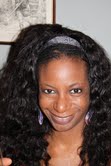


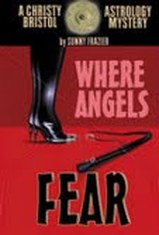

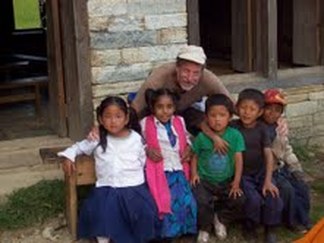
 RSS Feed
RSS Feed